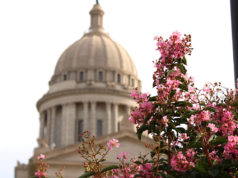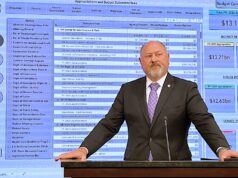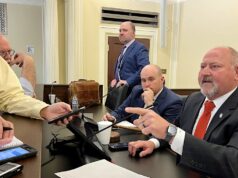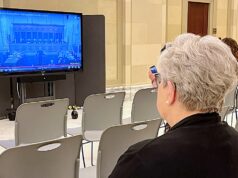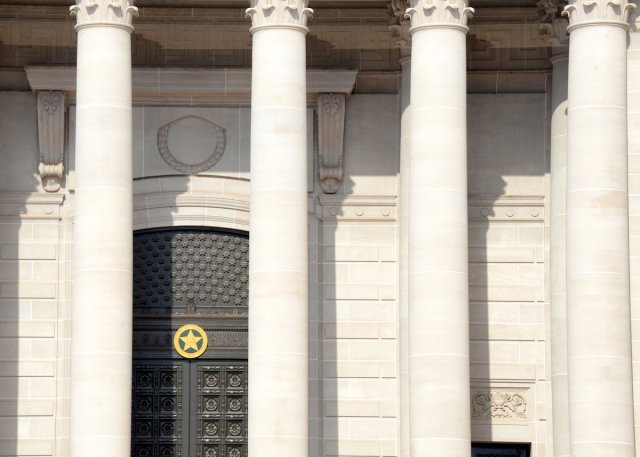

The Oklahoma Legislature will have about $9.64 billion to appropriate this session for the next fiscal year, after the state Board of Equalization certified a series of estimates this morning. Overall allocation of state dollars will likely be lower because about $1.7 billion of the $9.64 billion is considered to have come from one-time sources. That figure includes a chunk of revenue not appropriated for the current fiscal year, which ends June 30.
As a result, legislators ultimately are expected to finalize an appropriated budget of about $8 billion that makes targets, one-time investments, with some money available for replenishing state savings accounts.
The budget parameters are better than previously expected and should be welcome news for lawmakers, who began session Feb. 1. The House and Senate appropriations chairpersons have been working on the complicated state fiscal picture since the 2020 legislative session ended with a budget brawl that saw Gov. Kevin Stitt veto a “creative” effort to preserve state agency funding. Stitt’s veto was overridden by the Legislature, and most agencies absorbed only a 4 percent cut, which was lower than what the governor had sought.
During his State of the State address Feb. 1, however, Stitt praised the Legislature’s Fiscal Year 2021 budget and avoided mentioning how he had tried to veto it to force more cuts. With federal stimulus funds pumping life into Oklahoma businesses and state agencies, the economic outlook for the year ahead means the Board of Equalization’s official revenue estimate certification Tuesday was about $1.1 billion higher than its unofficial December estimate.
“Since December, we are estimating there will be modest gains in the oil price outlook,” said John Gilbert, a budget analyst for the Office of Management and Enterprise Services agency. Gilbert said General Revenue Fund estimates are 6.8 percent higher than they were in December. “Most of that is being driven by individual income tax, corporate tax and sales tax and our little bump in oil prices. The economic improvement due to stimulus and an economy improving are driving that.”
‘Better shape than most other states’
Despite the positive financial estimates, lawmakers will still have to shore up a budget built last year on the back of more than $1 billion in one-time funds (also called non-recurring revenues). In addition, Medicaid expansion passed by voters will require an additional $164 million, and other expenses like growing flex benefit payments and property tax reimbursements will also increase the state’s obligations.
Leaders from the Oklahoma House of Representatives expressed measured glee about the budget parameters certified Tuesday by the Board of Equalization.
“Vaccines occurring and businesses recovering have the economy and revenues rebounding well enough to replenish reserves, set strong agency budgets and grant tax relief to continue kickstarting Oklahoma’s recovery,” House Speaker Charles McCall (R-Atoka) said in a statement. “Keeping the economy open is continuing to benefit Oklahoma, both for our citizens and now for our state budget.”
House Appropriations and Budget Chairman Kevin Wallace (R-Wellston) focused on the FY 2021 budget set last session and suggested that lawmakers may “even consider tax relief” this year.
“Our decision last year to not appropriate our full authority and make some cautious, temporary appropriation reductions — followed by an improving economy — has Oklahoma’s budget in better shape than most other states,” Wallace said. “With this certification, we can make targeted investments in agencies, replenish reserves and even consider tax relief. State government is in a very good spot thanks to restrained conservative budgeting last year and a resilient economy.”
Stitt also said in a press release that the state has benefited from “keeping businesses open” during most of the pandemic.
“Other states are waking up to the reality of huge budget deficits, but Oklahoma’s economy is strong thanks to the balanced approach we took to address the pandemic and the Legislature’s wise decision not to spend all of the authorized amount last year,” Stitt said. “Keeping businesses open and getting COVID vaccines out quickly and efficiently has proven critical to keeping our head above water. Moving forward, my top budget priorities for FY 2022 are to deliver taxpayers more for their money and to invest in our fellow Oklahomans to fully unlock our full economic potential.”
The press release noted that the governor “believes the state of Oklahoma should use the non-recurring revenue to significantly replenish its savings account to be prepared for any future downturns and strategically invest in infrastructure projects to help grow the economy.”
Senate Appropriations Chairman Roger Thompson (R-Okemah) also released a statement urging caution.
“Oklahoma has benefitted from federal dollars, which helped these numbers. I am very optimistic for FY 2022, but cautiously optimistic about FY 2023. This is not the year to spend every dollar,” Thompson said. “We need to have funds easily accessible if we have another surge in COVID cases — money that can be used to pay for more testing, vaccines and other critical needs.”
While OMES did not distribute a press release summarizing the day’s complicated state budget numbers for the public, the following packet and slideshow were made available for perusal.
Board of Equalization Feb. 16 financial packet
 Loading...
Loading...
Board of Equalization Feb. 16 slideshow
 Loading...
Loading...
(Clarification: This article was updated at 4:45 p.m. Tuesday, Feb. 16, to clarify the numbers approved by the Board of Equalization.)










